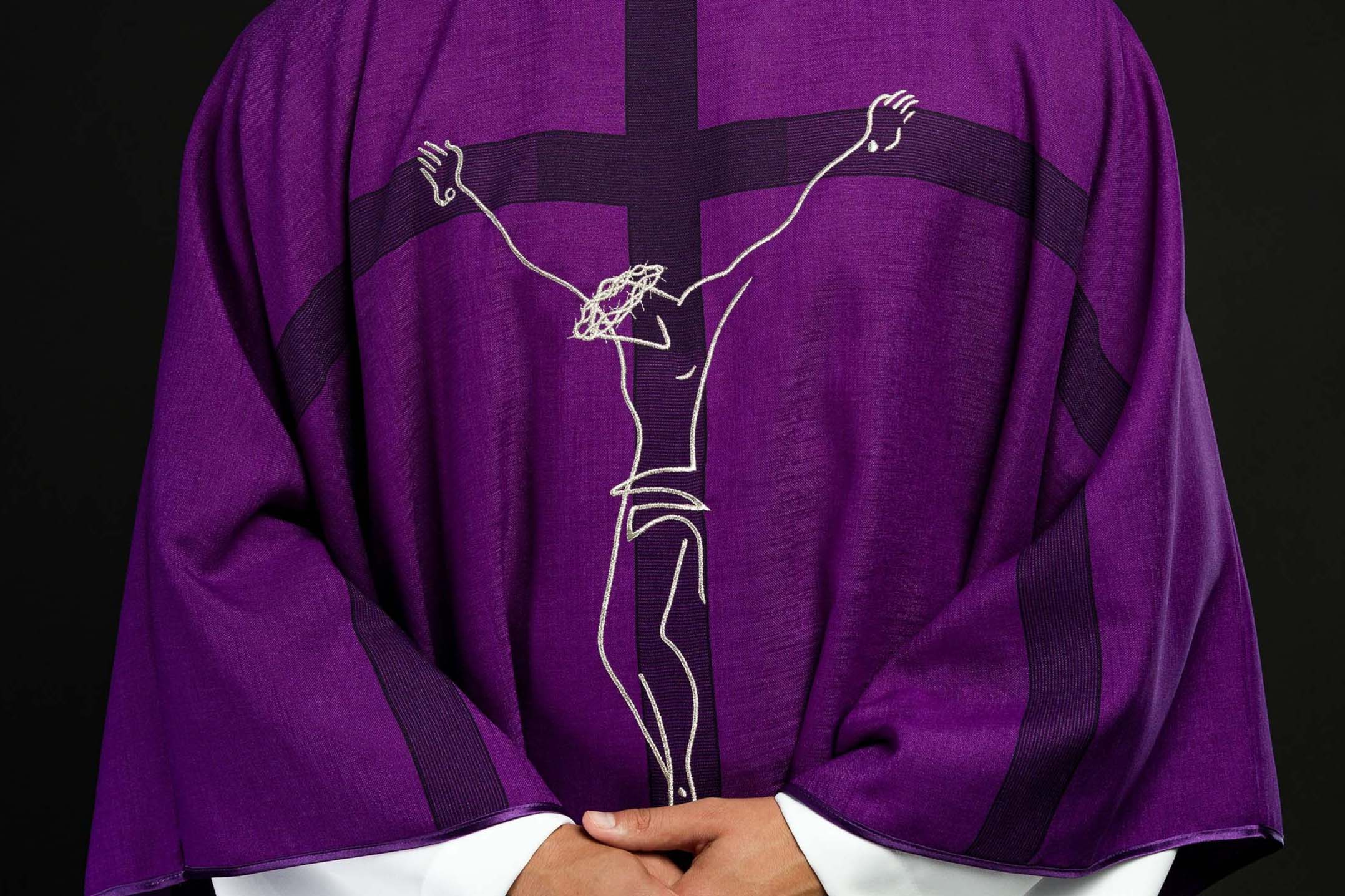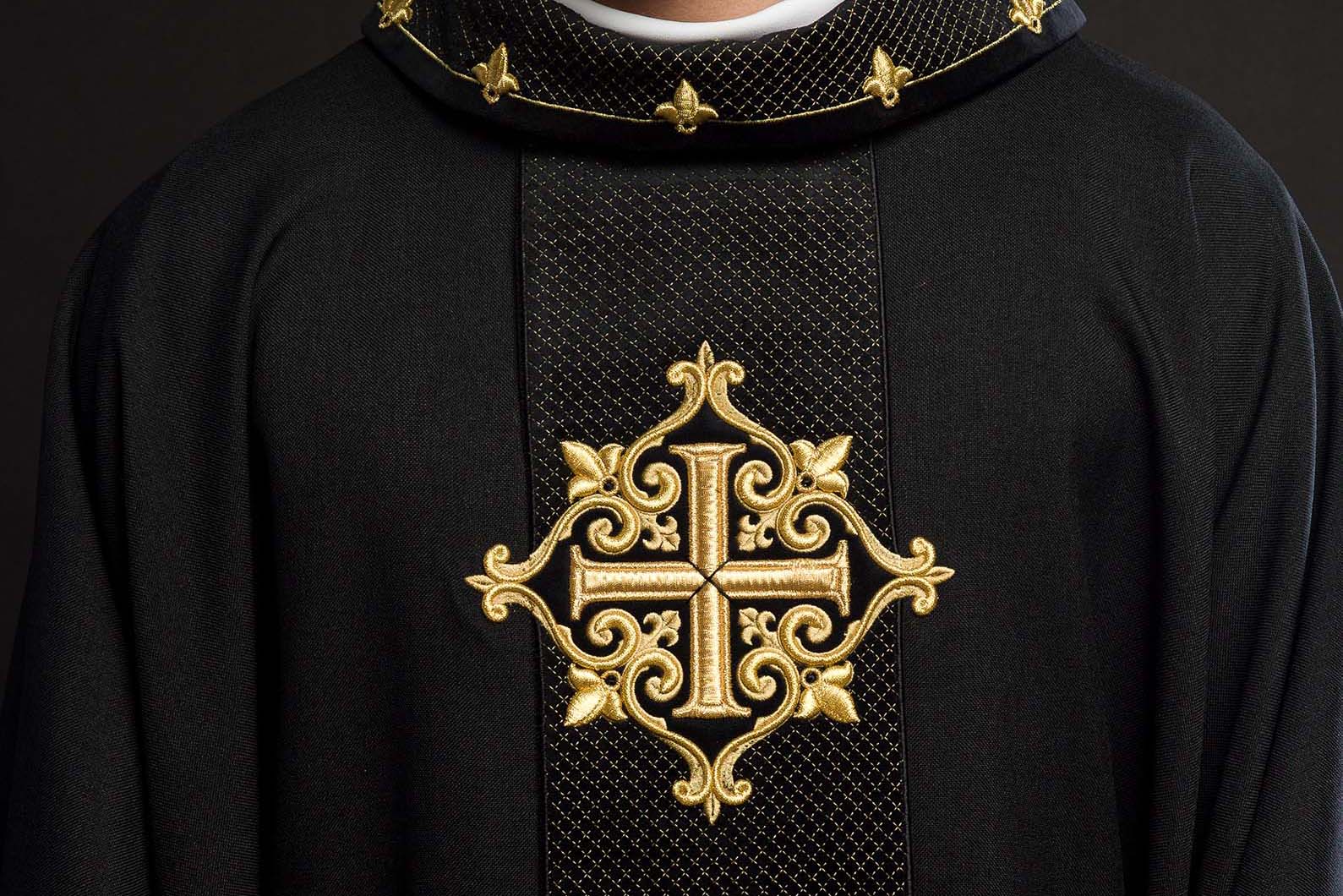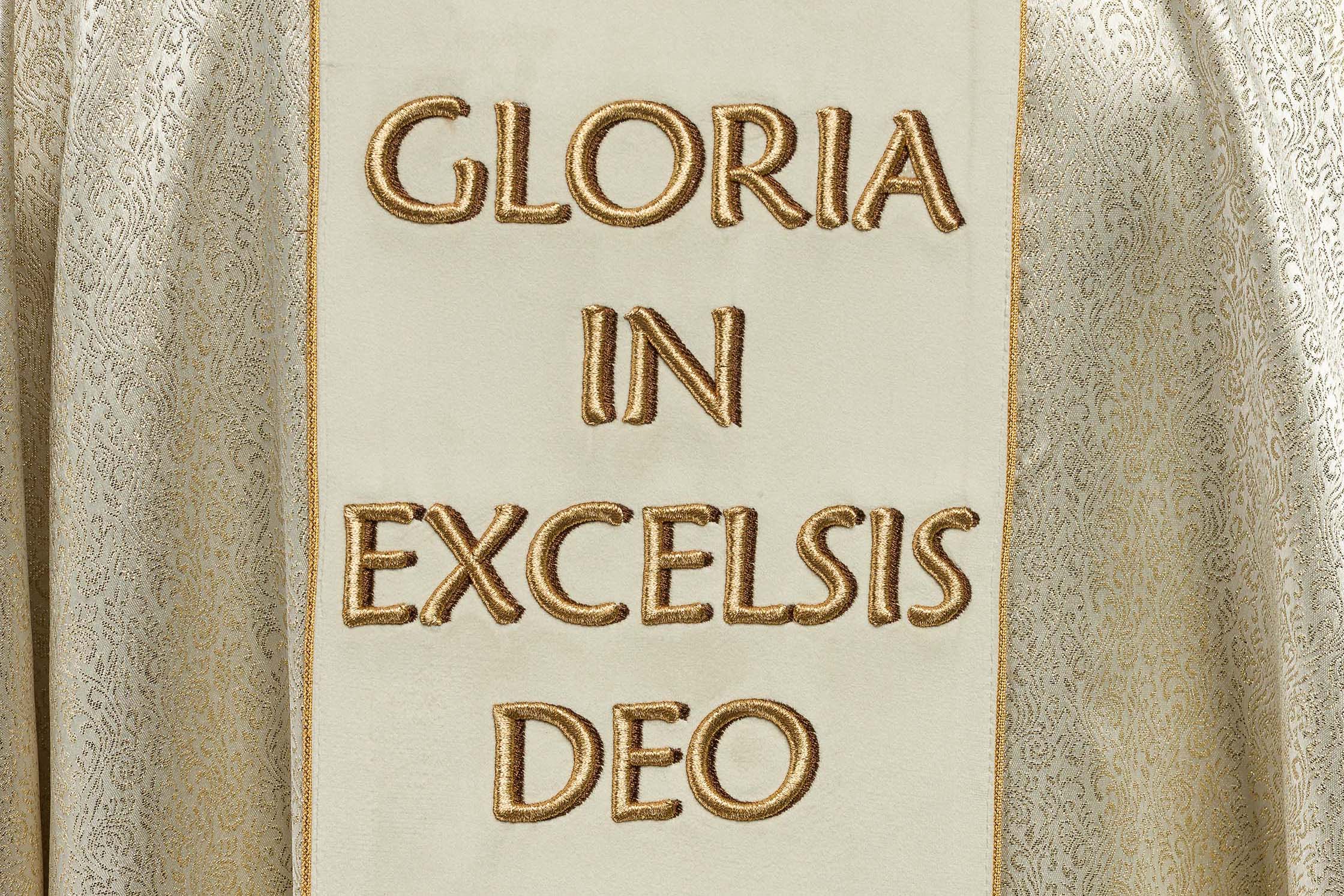
Advent Vestments: How to Choose and Why It Matters?
Advent Chasuble - Which one to choose and why?
The Advent season is a time of joyful anticipation for the birth of Jesus Christ. Its characteristic atmosphere, marked by reflection, penance, and hope, should also be reflected in the liturgical vestments used during celebrations. Choosing the right Advent chasuble is crucial to emphasize the spiritual dimension of this period. In this guide, we will look at what features an Advent chasuble should have, what colors and symbols are most often used in it, and what to pay attention to when buying it so that it serves for years and beautifully adorns the presbytery.
What characterizes an Advent chasuble?
The Advent chasuble, like other liturgical vestments, is deeply rooted in the tradition and symbolism of the Church. Its main goal is to emphasize the liturgical character of the period for which it is intended. Advent is a time of preparation, expectation, and reflection that precedes the solemn celebration of Christmas. Therefore, the vestments used during this period should refer to these values.
What colors dominate in Advent vestments?
The most characteristic color of Advent is purple. It is the color of penance, conversion, but also of royal majesty, symbolizing preparation for the coming of the King. Purple chasubles are widely used for most of the Advent season, both on the first and third Sundays of Advent (known as Gaudete Sunday, when pink is allowed).
On the third Sunday of Advent, called "Rejoice Sunday" (Gaudete), the liturgical use of pink is permitted. The pink chasuble symbolizes the joy flowing from the proximity of the birth of Jesus and is a moment of respite in the atmosphere of penance. Although it is not a strictly Advent color in the same sense as purple, its use on this particular day is an important liturgical element.
In addition to these two basic colors, sometimes at the beginning of Advent, or in a thematic context, other colors may also appear, but purple remains the dominant and most symbolic color of this period. Colors typical of Ordinary Time (green) or solemnities (white, gold, red, black) should be avoided unless the liturgical context clearly permits it.
What symbols adorn Advent chasubles?
Embroidery on Advent chasubles often refers to the symbolism of Advent and expectation. Popular motifs include:
- Cross: A universal symbol of Christianity, reminding of salvation and the path to it. Often embroidered in gold or silver on a purple background.
- Monogram IHS: An abbreviation of "Iesus Hominum Salvator" (Jesus Savior of Mankind), a fundamental symbol of the Christian faith.
- Star of Bethlehem: A symbol announcing the birth of Jesus, the way of the wise men, and hope for the world.
- Lilies or other flowers: Symbolizing the purity and innocence of Mary, who was preparing to receive the Child.
- Advent Wreath: Although less often embroidered directly on chasubles, the symbolism of the wreath (four candles) can be an inspiration for patterns.
- Biblical motifs: Scenes from the life of Mary and Joseph, messianic prophecies.
- Motifs of penance and reflection: Sometimes subtle patterns referring to the deeper spirituality of this period.
It is important that the decorations are elegant and not overwhelming, but only subtly emphasize the character of the period of expectation.
What to pay attention to when choosing an Advent chasuble?
When choosing an Advent chasuble, it is worth considering several key factors that will ensure its liturgical and aesthetic appropriateness:
Material
The material from which the chasuble is made affects its appearance, wearing comfort, and durability. Popular materials include:
- Jacquard: Jacquard fabrics often have patterns woven directly into the material, which gives them elegance and depth. They look good in purple, often with the addition of gold or silver threads.
- Polyester: Lightweight, durable, and easy to care for. Good quality polyester can perfectly imitate other fabrics and is a good choice for everyday chasubles.
- Velvet: Although less common in Advent, it can be used for special occasions, giving the vestment exceptional dignity.
- Ceremonial fabrics: Specially designed liturgical fabrics, often with a delicate pattern or sheen, that drape beautifully during movement.
The choice depends on preference and budget. It is important that the material is breathable and provides comfort during long celebrations.
Style and cut of the chasuble
Chasubles are available in various cuts, the most popular of which are:
- Roman chasuble: More classic, with wide, often embroidered decorations (stripes) on the front and back. It goes well with traditional purple embroideries.
- Gothic chasuble (fiddleback): Characterized by a narrower cut and a more vertical arrangement of decorations, often with a cross or symbol embroidered on the center of the back and chest. This style is often chosen for its elegance and modern look.
The decision between these styles is often a matter of individual preference and the aesthetics of a given church.
Quality of embroidery and finishing
Embroidery is a key decorative element of the chasuble. It should be made precisely, using high-quality threads that do not fade or pill. Good quality embroidery adds charm and durability to the vestment. Pay attention to:
- Accuracy of workmanship: Are the embroidery lines clean and the details refined?
- Type of thread: Gold, silver, or purple embroidery threads should be uniform and resistant to abrasion.
- Accessories: Some chasubles may be decorated with stones or hand-embroidered, which adds to their uniqueness and prestige.
- Lamé finishing: Well-finished edges ensure durability and aesthetics.
Where to buy an Advent chasuble?
When looking for the perfect Advent chasuble, it is worth taking advantage of the offer of proven manufacturers and distributors of liturgical vestments. Specialist stores, such as **Haftina**, offer a wide selection of vestments made of high-quality materials, with attention to detail and compliance with liturgical requirements. The availability of various models, colors, and embroideries allows you to match the vestment to individual needs.
How to care for an Advent chasuble?
To ensure that the chasuble lasts for many years, remember to take proper care of it:
- Washing: Most liturgical vestments require dry cleaning or hand washing at a low temperature, using mild detergents. Always check the manufacturer's label.
- Ironing: Iron at a low temperature, preferably through a protective cloth, to avoid damaging the embroidery or material.
- Storage: Store the chasuble in a cover, in a dry and airy place, to prevent creases and damage.
Summary - which Advent chasuble to choose?
Choosing an Advent chasuble is a decision that should take into account both liturgical and aesthetic requirements. The dominant color is purple, symbolizing penance and expectation, with an acceptable accent of pink on the third Sunday of Advent. The motifs of the embroideries should refer to the symbolism of the period, such as the star, cross, or monogram IHS. When choosing a chasuble, pay attention to the quality of the material, the precision of the embroidery, and the cut that will best suit your needs. In the **Haftina** store you will find a wide selection of high-quality Advent chasubles, made with attention to the smallest detail, which perfectly emphasize the spiritual character of this unique time of waiting for Christmas. We invite you to familiarize yourself with our collection on haftinausa.com, where you will also find other vestments and liturgical accessories.
```




